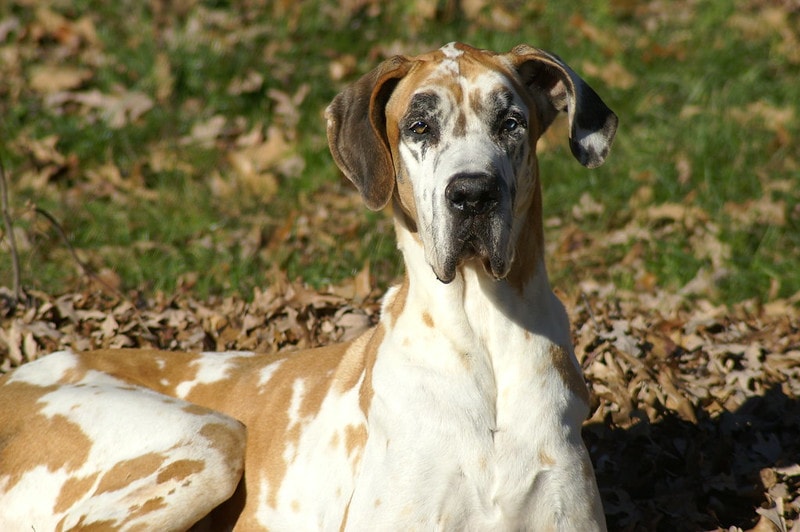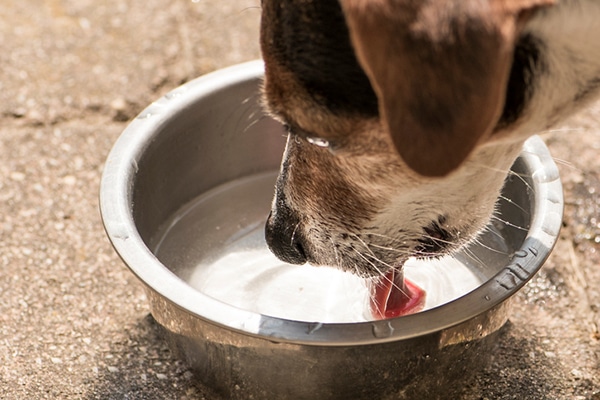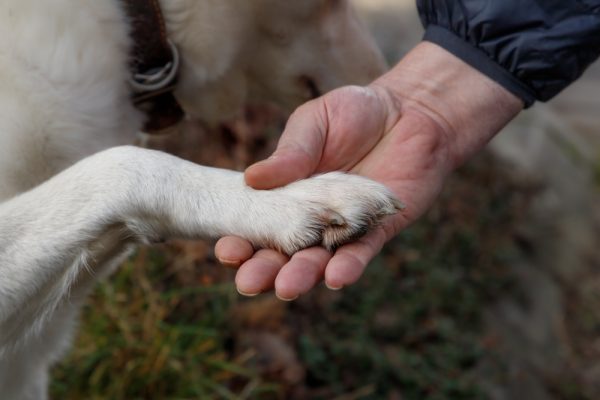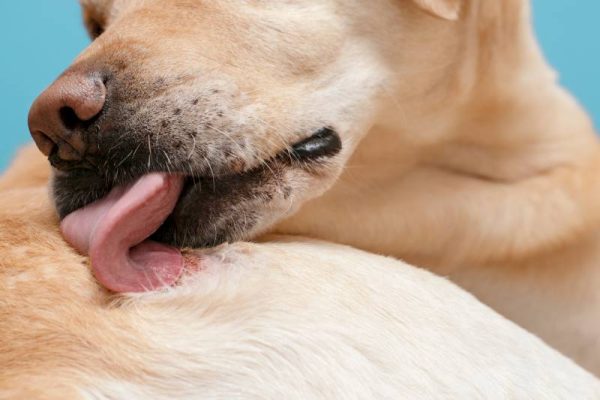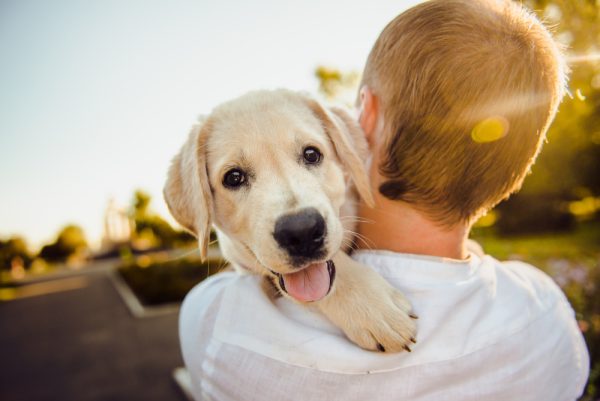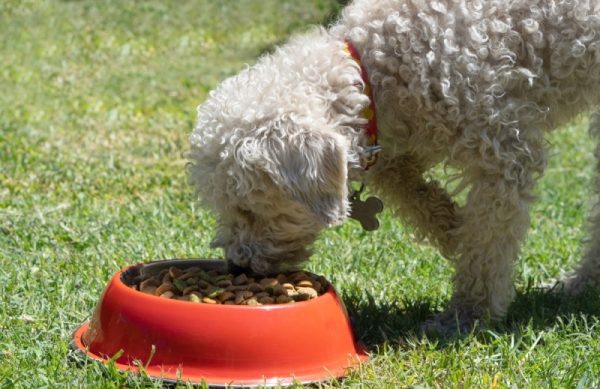In this article
View 6 More +Great Danes are some of the most popular dogs in the United States. These large, friendly dogs tend to be incredibly loving and sweet. Males can weigh up to 175 pounds and reach 32 inches at the shoulders. Many Great Danes tower over their owners when standing on their hind legs.
Breed Overview
Height:
28–32 inches
Weight:
110–175 pounds
Lifespan:
7–12 years
Colors:
Black, black & white, blue, brindle, fawn, harlequin, mantle, merle, white
Suitable for:
Families with older children, people looking for a watchdog, active individuals
Temperament:
Loyal, patient, affectionate, protective, adaptable
They have short, sleek coats in various colors and patterns, including black, blue, brindle, fawn, and harlequin. Fawnequin Great Danes’ coats feature a mixture of fawn and harlequin markings, with white fawn patches following a Harlequin pattern. Fawnequin Great Danes are quite rare.
Fawnequin Great Dane Characteristics

The Earliest Records of Fawnequin Great Danes in History
Great Danes are a German breed that’s more than 400 years old. They were initially bred from Mastiff-like dogs and Irish Wolfhounds to hunt wild boar. During the 1700s, these dogs became popular with German aristocrats, who often used Great Danes as guard dogs and hunting dogs.
Dogs with characteristics closely resembling those seen in modern Great Danes appeared in the 1800s. In German, they’re called “German dogs” (Deutsche Dogge). They were referred to as German boarhounds until geopolitical tensions prompted people to call them Great Danes.
But the origins of Fawnequin Great Danes remain largely unclear. We don’t know when or how dogs with this coat pattern emerged, but it may not have been intentional. Any parents that can produce Harlequin Great Danes can potentially produce Fawnequin dogs due to the recessive nature of the responsible gene.
Reputable breeders usually shy away from intentionally selecting Fawnequin markings due to the high risk of genetic defects. But dogs with this distinctive coat pattern sometimes result when trying to produce litters with Harlequin markings.
How Fawnequin Great Danes Gained Popularity
Great Danes first gained popularity in 17th-century Germany, where they were bred as hunting dogs by aristocrats. During the 18th century, Great Danes became status symbols and were often used to guard country estates and trot alongside carriages. Favorites were designated Kammerhunde, or chamber dogs, and allowed to sleep with their masters at night in the name of offering protection.
In the 19th century, greyhounds were mixed with the breed to create elegant dogs with broad shoulders, rectangular heads, and clean athletic lines. Today breeders consciously select personality traits such as loyalty, gentleness, and friendliness.
Great Danes were the 17th most popular breed in the United States as of 2021. Fawnequin Great Danes aren’t incredibly popular due to their rarity and the issues raised by intentionally breeding dogs with known genetic weaknesses. Fawnequins aren’t recognized by the American Kennel Club (AKC), so there’s little demand for these pets among those interested in participating in dog shows.
Formal Recognition of Fawnequin Great Danes
The AKC first recognized Great Danes in 1887. Standard colors include black, white, silver, merle, fawn, and brindle. Black and white markings are accepted under AKC standards, as are black masks. The breed standard requires Great Danes to be strong, elegant, and balanced, with strong, angular heads and broad chests. Male dogs should be stockier and more muscled than females.
The AKC doesn’t recognize Fawnequin Great Danes, but dogs with two pedigree parents can be included in the AKC’s breed registry. Reputable breeders usually refuse to breed Fawnequin Great Danes intentionally, but since the trait is linked to a recessive gene, dogs with this coat pattern sometimes slip into Harlequin litters.

Top 3 Unique Facts about Great Danes
1. Great Danes Have Serious Popular Culture Chops
Great Danes are incredibly popular pets and make quite a few appearances in popular culture. Scooby Doo, the animated dog from the 1970s series of the same name, was a Great Dane. Iwao Takamoto, Scooby’s creator, intentionally drew the famous dog as the opposite of the ideal Great Dane.
That’s why Scooby has a long tail and bowed legs. The Great Dane is the state dog of Pennsylvania, and Damon, the Great Dane, serves as the University of Albany’s mascot. There may even be a description of one of these dogs in 12th-century B.C.E Chinese literature!
2. Otto von Bismarck Owned a Great Dane
Otto von Bismark, Prussia’s minister-president and foreign minister responsible for orchestrating German unification in 1871, was a lifelong Great Dane fan. After the creation of the German Empire, Bismarck served as the new nation’s first chancellor.
But Bismark’s love affair with the Great Danes started well before he became an international political force. Bismark’s Great Dane, Ariel, accompanied the young aristocrat to Gottingen when the future chancellor matriculated at the city’s university. But Bismark didn’t stop at one of these massive beauties. He owned several Great Danes, including Tyras, Tyras II, and Flora.
3. Great Danes Are Some of the Largest Dogs in the World
Several Great Danes have held the record for the largest dog in the world, including one really large dog named Zeus, who is 3′ 5 on all fours and over 7′ tall on his hind legs. Zeus enjoys sitting on laps, stealing food from counters, and watching the activity at the local farmer’s market.
The gentle giant was scared of the family’s baby at first, but the two have now become fast friends. Zeus lives with three Australian Shepherds and a cat named Penelope. He’s over 2 years old and needs around 12 cups of food daily to stay in top shape.
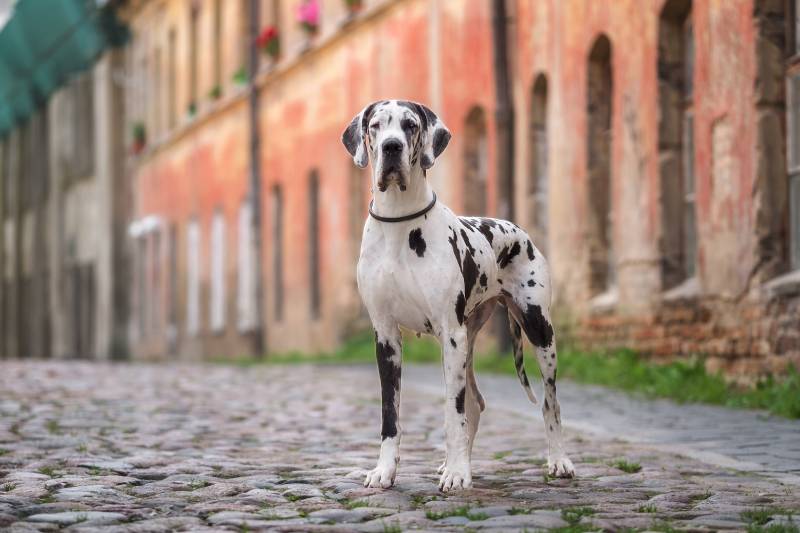
Do Fawnequin Great Danes Make Good Pets?
Great Danes make wonderful pets, but they’re not right for all owners. While the breed’s sweet and gentle nature makes it a pure pleasure to be around, the fact remains that Great Danes are massive.
They require a great deal of room and a good amount of exercise. Most need at least two good walks per day to be at their best. And Great Danes, like all giant breeds, tend to have a relatively short lifespan. Most only live 7–10 years.
Great Danes require a ton of food, making the breed particularly expensive to keep. While Fawnequins have all the friendliness and loyalty Great Danes are known for, they aren’t always a great choice due to the potential for genetically based health problems.

Conclusion
Great Danes, the giants of the canine world, have elegant, athletic, stately lines. Although Great Danes tend to be mellow, they’re not right for every owner since they require a large space, daily exercise, and vast quantities of dog food. Fawnequin Great Danes aren’t recognized by the AKC, and they may be at increased risk of genetic conditions due to the recessive gene linked to their color pattern.
Featured Image Credit: Big Dog, fun in photo’s, Flickr, CC BY 2.0
